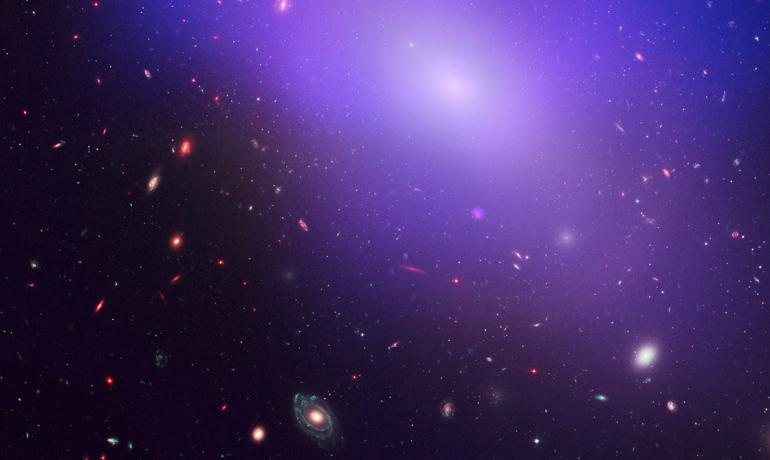New evidence could help explain how some massive black holes shut down a galaxy’s ability to make new stars.
Astronomers say jets of “radio-frequency feedback” streaming from mature galaxies’ central black holes are the “off switch,” preventing hot free gas from cooling and collapsing into baby stars.
“When you look into the past history of the universe, you see these galaxies building stars,” says Tobias Marriage, assistant professor of physics and astronomy at Johns Hopkins University.
“At some point, they stop forming stars and the question is: why? Basically, these active black holes give a reason for why stars stop forming in the universe.”
Published in the journal Monthly Notices of the Royal Astronomical Society, the findings were made possible by adapting a well-known research technique to solve a new problem.
The Sunyaev–Zel'dovich effect signature—typically used to study large galaxy clusters—can also be used to learn a great deal about smaller formations, says postdoctoral fellow Megan Gralla.
The SZ effect occurs when high-energy electrons in hot gas interact with faint light in the cosmic microwave background, light left over from earliest times when the universe was a thousand times hotter and a billion times denser than today.
Cool and Condense
“The SZ is usually used to study clusters of hundreds of galaxies but the galaxies we’re looking for are much smaller and have just a companion or two,” Gralla says.
“What we’re doing is asking a different question than what has been previously asked. We’re using a technique that’s been around for some time and that researchers have been very successful with, and we’re using it to answer a totally different question in a totally different subfield of astronomy,” Gralla says.
“I was stunned when I saw this paper, because I’ve never thought that detecting the SZ effect from active galactic nuclei was possible,” says Eiichiro Komatsu, director of the Max Planck Institute for Astrophysics in Germany who was not involved in the research. “I was wrong. . . . It makes those of us who work on the SZ effect from galaxy clusters feel old; research on the SZ effect has entered a new era.”
In space, hot gas drawn into a galaxy can cool and condense, forming stars. Some gas also funnels down into the galaxy’s black hole, which grows together with the stellar population. This cycle can repeat continuously; more gas is pulled in to cool and condense, more stars begin to shine and the central black hole grows more massive.
No New Stars
But in nearly all mature galaxies—the big galaxies called “elliptical” because of their shape—that gas doesn’t cool any more.
“If gas is kept hot, it can’t collapse,” Marriage says. When that happens: no new stars.
Researchers found that the elliptical galaxies with radio-frequency feedback—relativistic radio-frequency-emitting particles shooting from the massive central black holes at their center at close to the speed of light—all contain hot gas and a dearth of infant stars. That provides crucial new evidence for their hypothesis that radio-frequency feedback cuts off star-making in mature galaxies.
It is still not known, however, just why black holes in mature elliptical galaxies begin to emit radio-frequency feedback. “The exact mechanism behind this is not fully understood and there are still debates,” Marriage says.
The new study, combined with others detecting SZ signals from more ordinary galaxies, “pose new challenges to the theory of galaxy formation, as there were hardly any data which told us how much hot gas there is around galaxies,” Komatsu says.
The researchers used data from the Atacama Cosmology Telescope, a 6-meter telescope in northern Chile; the National Radio Astronomy Observatory’s Very Large Array in New Mexico and its Green Bank Telescope in West Virginia; the Parkes Observatory in Australia; and the European Space Agency’s Herschel Space Observatory. The National Science Foundation funded the study.
Source: Johns Hopkins University. Republished from Futurity.org under Creative Commons License 3.0.
